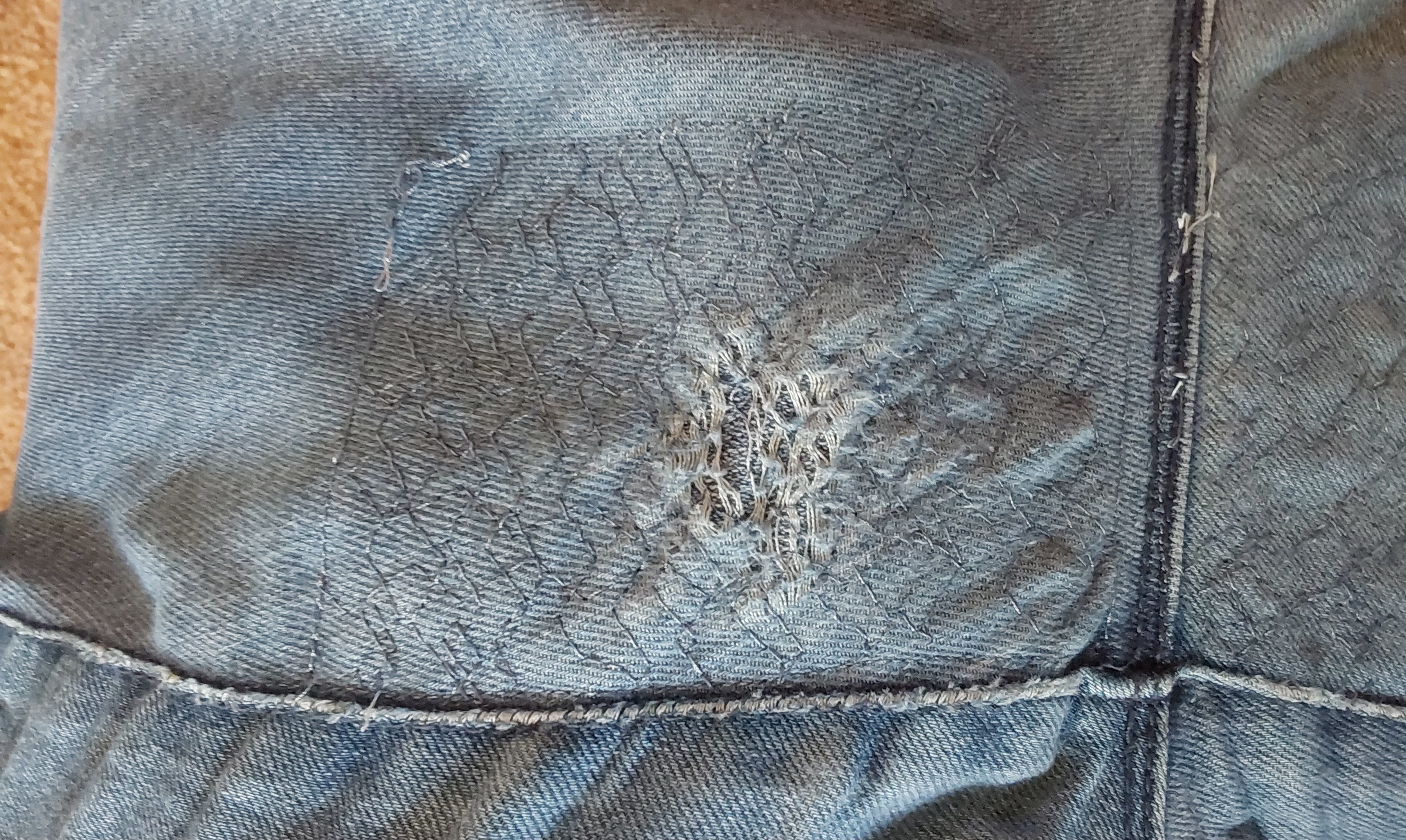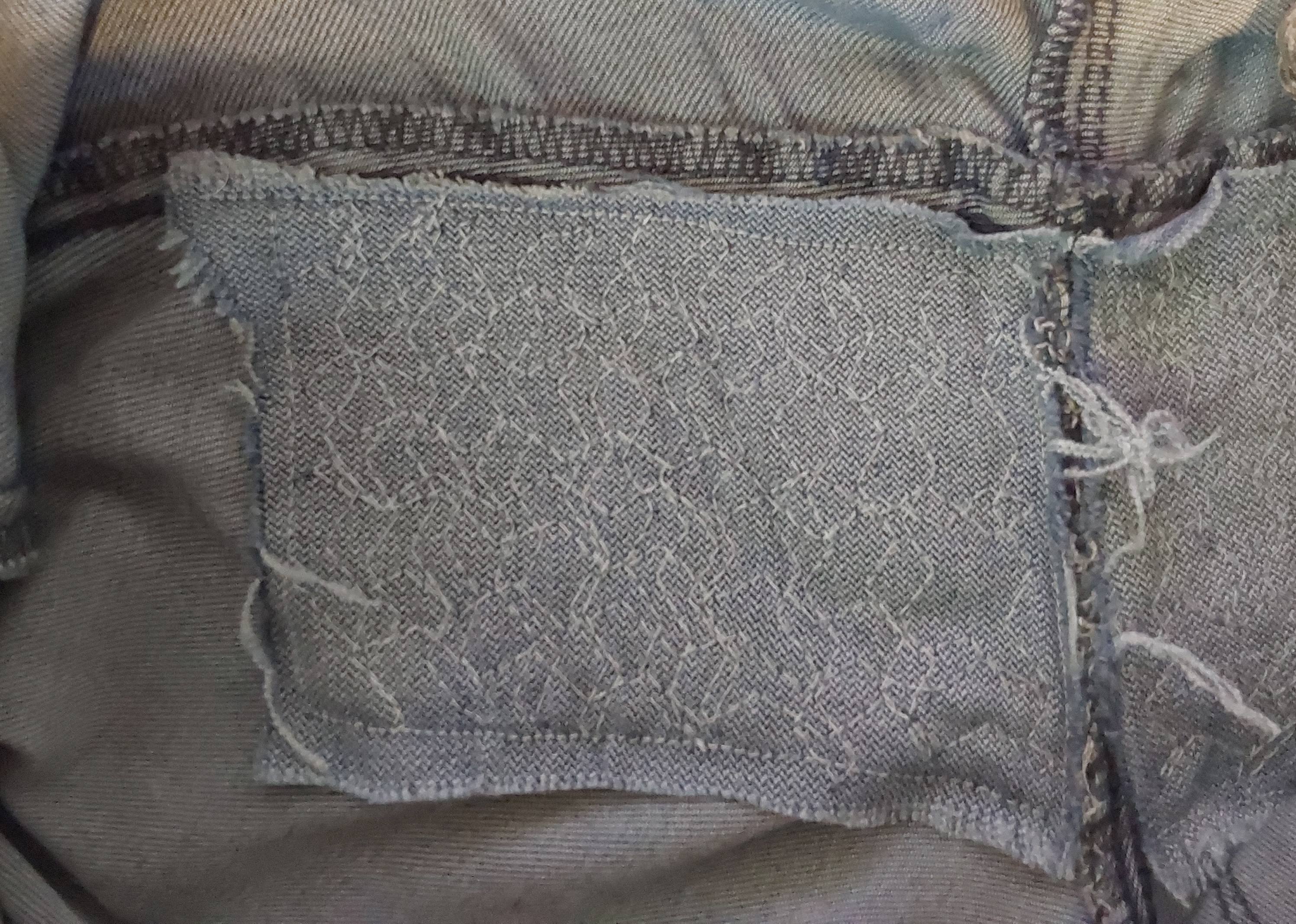@[email protected] recommended I try "underpatching", where you use some fabric to give the stitch something to hold on to beyond the already compromised material. Some people even do this in overt ways for the look of it. Here's one they shared, OP @ https://mastodon.social/@StudioCaroline/110521864616379151



